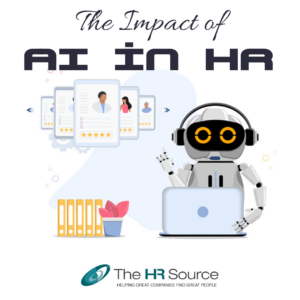Part 5: The Great Resignation
The Great Resignation is hitting employers like a tsunami, but it should not be a surprise. The “War for Talent” was first identified in the late 90’s. In their 2001 book The War for Talent, the authors predicted that “the make-or-break for firms in the next two decades would be the ability to attract, develop, and retain talent”. Anthony Klotz, from Texas A&M, used the term the Great Resignation in 2019 to predict a mass, voluntary exodus from the workforce. Today, exacerbated by the pandemic, we’re in the thick of that battle, and it’s quite real.
As shown below, the Federal Reserve Economic Data reported 10.2 M job openings as of July 2021, up from 7.1M at the start of the year.
What distinguishes The Great Resignation from pre-pandemic competition is the voluntary nature of resignations, the causes for turnover and retention solutions. Research from McKinsey & Company shows that among those somewhat likely to leave their job, 64% would leave without another job in hand. A deeper dive reveals a disparate effect on women. Pre-pandemic, there was little difference in attrition rates based on gender. Now, one in four women are considering leaving the workforce or downshifting their careers versus one in five men. Those hardest hit are working mothers (especially with children under 10), women in senior management positions, and Black women.
There is a significant shift in how people think about work and what they are expecting from employers. For those working from home the pandemic allowed time to re-examine values. Those continuing to work onsite faced concerns over health and safety, separations from family and household, and increased hours and workload. The cost/benefit of a two income household came under scrutiny, and everyone experienced stress and burnout. As employers made tough decisions regarding the workplace, many employees became more conscious of how they felt about the work culture, policies, and how they were being treated. For some, the re-evaluation, along with stimulus checks and unemployment benefits, created an unprecedented opportunity to become entrepreneurs. As of July 2020 the number of applications for starting a business reached a 95% increase over 2019. Black women appear to be leading this trend.
To address the Great Resignation, companies cannot solely rely on increased wages and unique perks to attract new hires. Money, ping -pong tables and beverage stations no longer align with employee values. Medical benefits remain the cornerstone, however, taking a more holistic approach to overall wellness and work/life balance are the needs employees expect employers to address. Pre-pandemic, Americans used only 54% of their eligible vacation time, according to Glassdoor, and many forfeited time completely. Offering paid time off (PTO) shifts the focus from earned vacation time to an available and flexible benefit. Some companies, especially those in technology, have instituted unlimited PTO to prevent burnout and send a strong message that each employee is empowered to make their own decisions to meet their needs, as long as performance goals are met. As science has shown, being recharged allows us to show up as our best, most productive selves.
Benefits help attract new talent but what about retention? What matters most to people is how they are treated and management is key. Inclusion, trust, respect and support have never been more important. Gartner’s 2020 WellBeing Employee Survey finds that only 49% of employees say their manager understands their problems and needs. As a solution, flip Exit Interviews on their head and have periodic “Stay Interviews”. Talk about motivators, challenges and career goals. The goal is to create a partnership in developing the employee, through listening and responding to their unique needs. What also resonates with employees is recognition for a job well done. Management support and mentoring for career growth and advancement, can prevent employees from seeking it elsewhere. Lastly, in a hybrid workplace, make sure those who may be less visible receive the same recognition and opportunity as those physically in the workplace to prevent turnover from lack of career growth. Managers share responsibility with HR / People Operations to recruit and hire a diverse talented workforce but they must also own the responsibility for talent retention.
As the country continues to navigate through the pandemic, employers across all sectors will find success depends on recognizing that workforce dynamics have forever changed. Individuals have greater personal clarity, are taking greater ownership of their careers and are seeking employment that best aligns with their priorities. Therefore, developing an attractive workplace and culture is essential to address the Great Resignation.
In the wake of The Great Resignation, organizations are placing increased time and resources into recruiting and retaining talent. Need help navigating new or expanded approaches? Contact The HR SOURCE. 301-459-3133/thehrsource.com.




